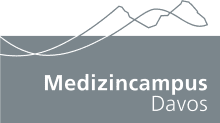When airborne pollen levels are higher, increased SARS-CoV-2 infection rates can be observed. These results were determined by a large-scale study conducted by an international team headed by researchers at the Technical University of Munich (TUM) and the Helmholtz Zentrum München. Members of high-risk groups could protect themselves by watching pollen forecasts and wearing dust filter masks.
In the spring of 2020, the outbreak of the coronavirus pandemic appeared to coincide with the tree pollen season in the northern hemisphere. These observations prompted an international team of researchers to conduct an extensive investigation: The scientists wanted to know whether there is a demonstrable link between airborne pollen concentrations and SARS-CoV-2 infection rates.
Pollen is a significant environmental factor influencing infection rates
Based on CK-CARE research and under the leadership of first author Athanasios Damialis, the team at the Chair of Environmental Medicine at TUM collected data on airborne pollen concentrations, weather conditions and SARS-CoV-2 infections – taking into consideration the variation of infection rates from one day to another and the total number of positive tests. In their calculations, the team also included data on population density and the effects of lockdown measures. The 154 researchers analyzed pollen data from 130 stations in 31 countries on five continents.
„Wearing a particle filtering mask when pollen concentrations are high can keep both the virus and pollen out of the airways.”— Prof. Claudia Traidl-Hoffmann
The team showed that airborne pollen can account for, on average, 44 percent of the variation in infection rates, with humidity and air temperature also playing a role in some cases. During intervals without lockdown regulations, infection rates were on average 4 percent higher with every increase of 100 grains of airborne pollen per cubic meter. In some German cities, concentrations of up to 500 pollen grains per cubic meter per day were recorded during the study – which led to an overall increase in infection rates of more than 20 percent. In regions where lockdown rules were in effect, however, the infection numbers were on average only half as high at comparable pollen concentrations.









